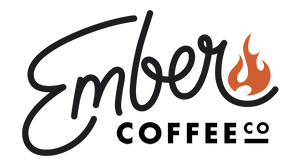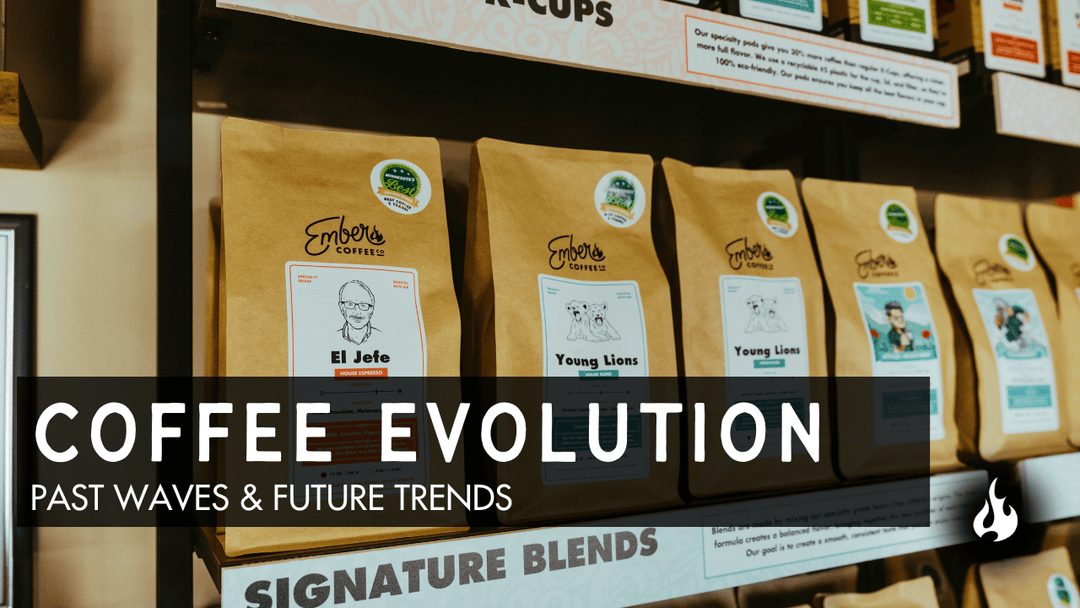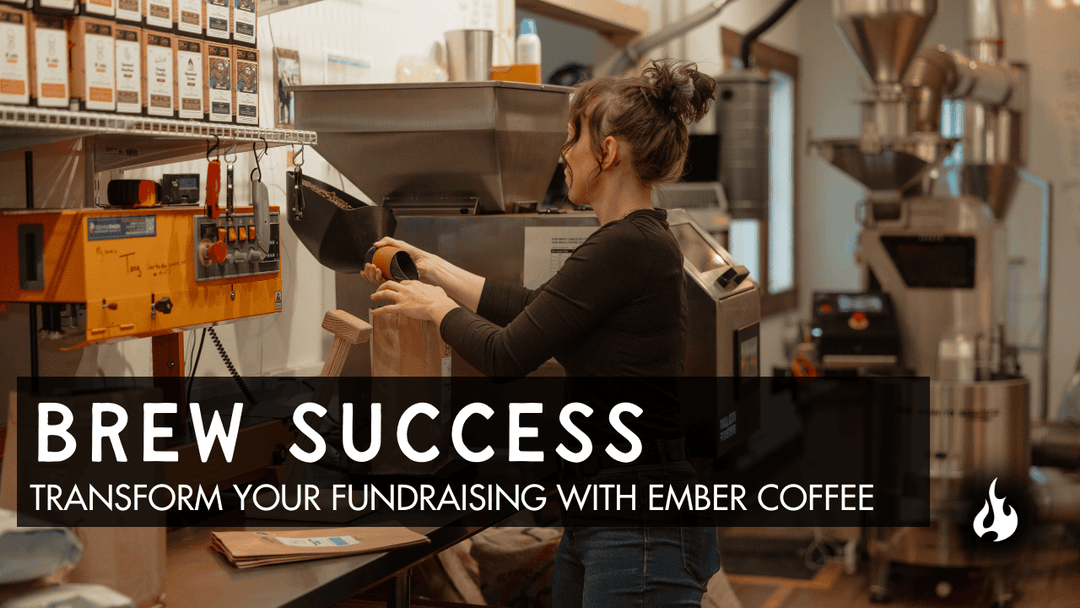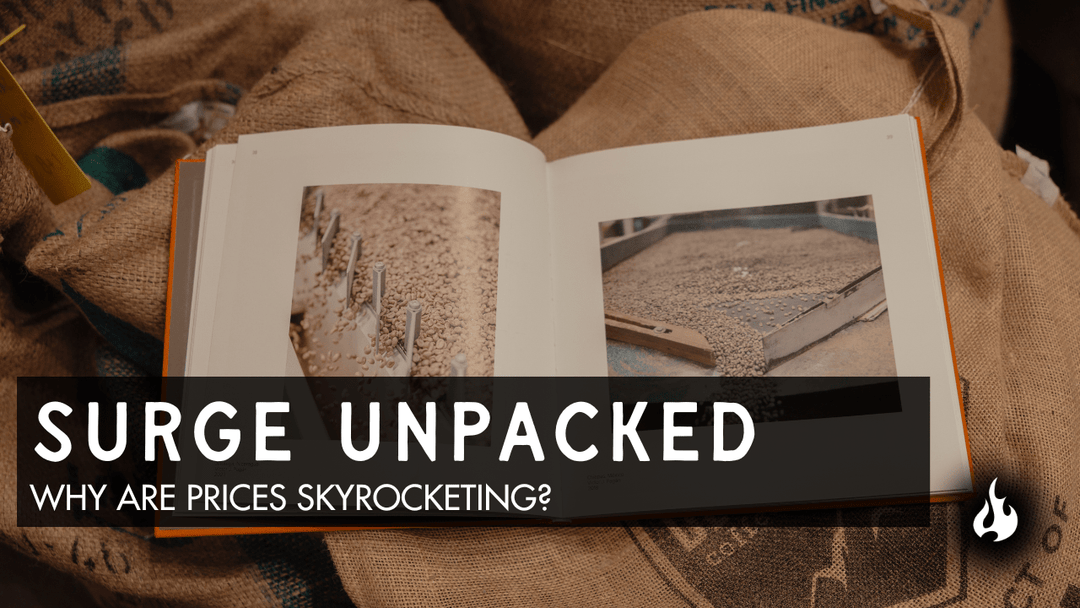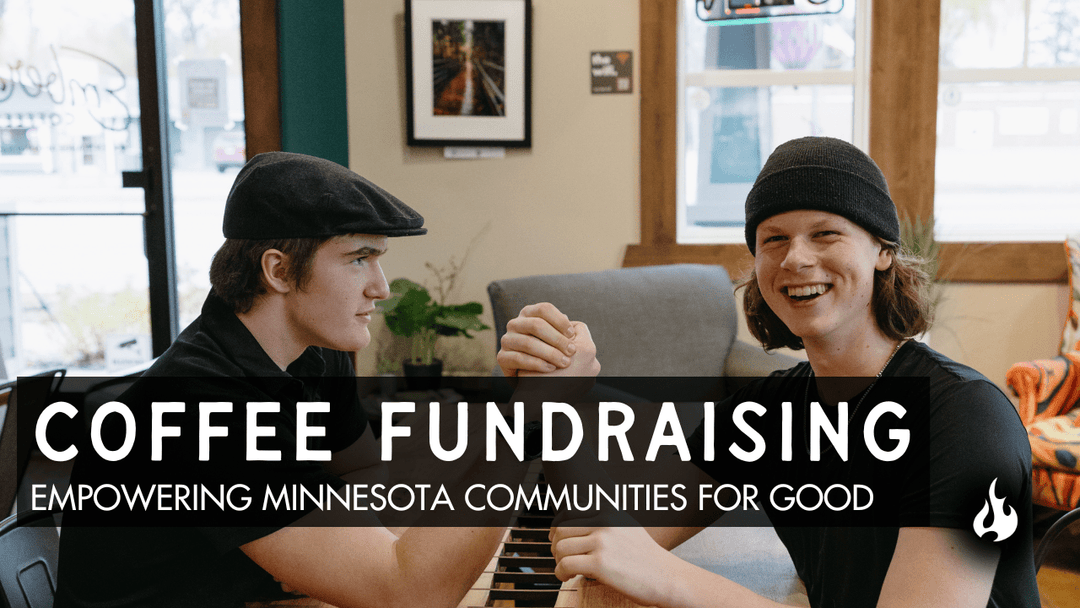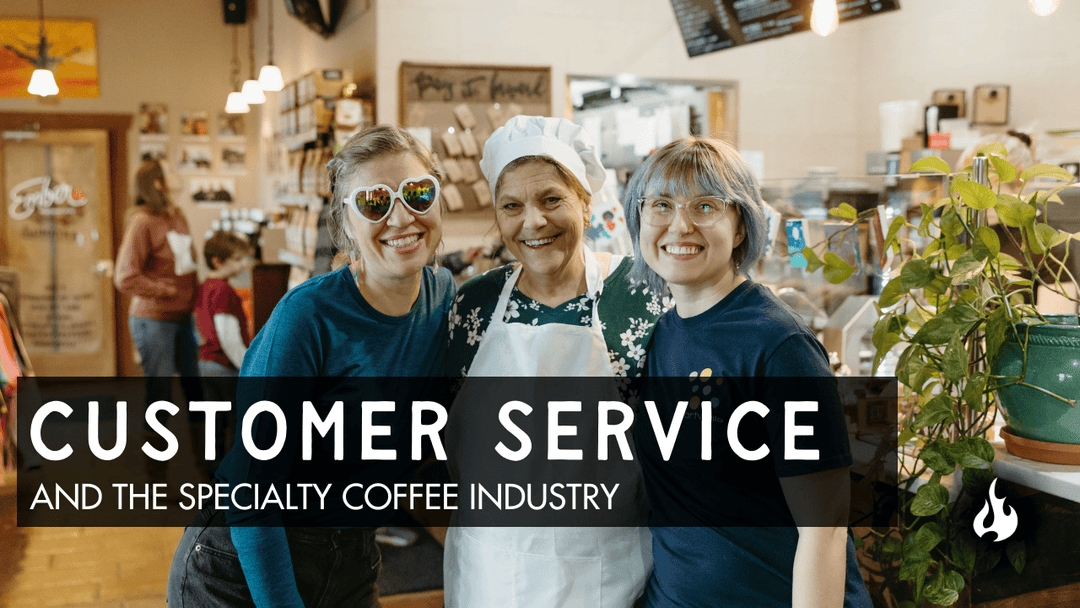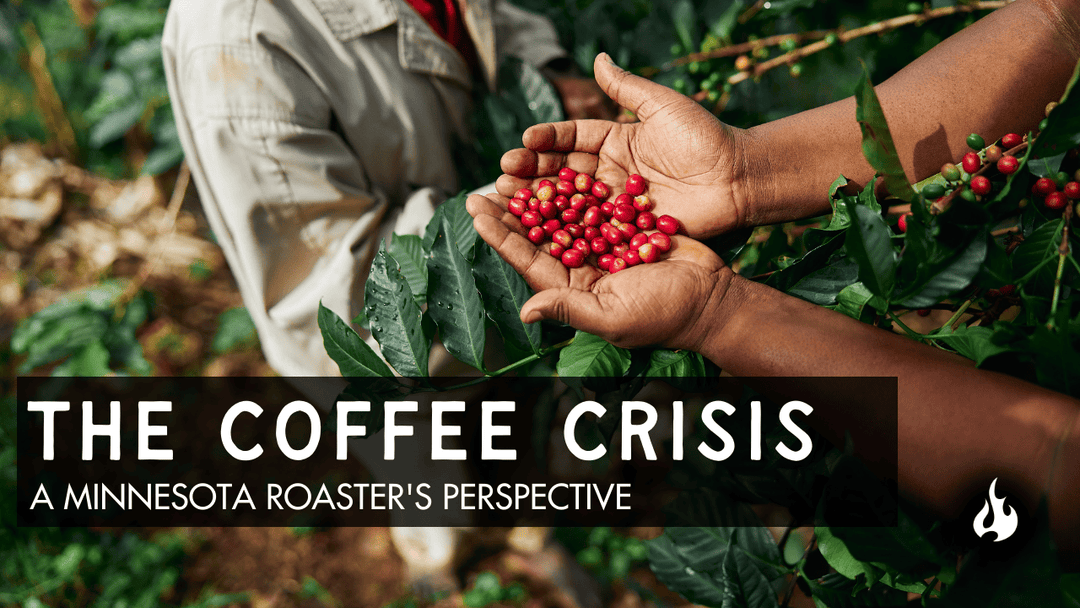Set Up the Ultimate Home Coffee Bar
Set Up the Ultimate Home Coffee Bar
Creating a coffee bar at home is a great way to elevate your daily coffee experience and add a personal touch to your kitchen or living space, even in a rental. Whether you're renting a home in Portland, OR, buying a home in Burlington, VT, or searching for an apartment in New York City, NY, having a dedicated space for your coffee essentials can transform your morning routine into a more enjoyable and relaxing ritual. From the smell of freshly brewed coffee to the convenience of having all your favorite beans, mugs, and brewing equipment within reach, a home coffee station is a perfect blend of function and style.
Set Up the Ultimate Home Coffee Bar
Set Up the Ultimate Home Coffee Bar
Creating a coffee bar at home is a great way to elevate your daily coffee experience and add a personal touch to your kitchen or living space, even in a rental. Whether you're renting a home in Portland, OR, buying a home in Burlington, VT, or searching for an apartment in New York City, NY, having a dedicated space for your coffee essentials can transform your morning routine into a more enjoyable and relaxing ritual. From the smell of freshly brewed coffee to the convenience of having all your favorite beans, mugs, and brewing equipment within reach, a home coffee station is a perfect blend of function and style.

Set Up the Ultimate Home Coffee Bar
Creating a coffee bar at home is a great way to elevate your daily coffee experience and add a personal touch to your kitchen or living space, even in a rental. Whether you're renting a home in Portland, OR, buying a home in Burlington, VT, or searching for an apartment in New York City, NY, having a dedicated space for your coffee essentials can transform your morning routine into a more enjoyable and relaxing ritual. From the smell of freshly brewed coffee to the convenience of having all your favorite beans, mugs, and brewing equipment within reach, a home coffee station is a perfect blend of function and style.
Designing a coffee bar at home that suits your taste involves considering things like space, equipment, and aesthetics. With a little planning, you can create a coffee corner that reflects your personal style while ensuring you have everything you need to craft the perfect cup. With tips from experts in the coffee and home design fields, we’ll show you step-by-step how to create an at-home coffee bar that caters to your unique needs and enhances your home coffee experience.
1. Figure out your space
When planning a coffee bar at home, the first step is determining the best spot for it. “Creating a space that suits how you want to make coffee and is enjoyable to use is the best way to grow your love of creating the perfect-tasting coffee at home,” shares Toby, the coffee expert behind Coffee with Conscience.
The good news is that you don’t need a large area to create a functional and stylish coffee setup. Whether you have an entire countertop to dedicate or just a small corner to spare, the key is to work with what you have.
Counter top vs coffee cart
“Creating the perfect home coffee station is all about thoughtful organization and quality essentials,” advises Brigette Romanek, interior designer and blogger at HomeDecorFull. “Start with a dedicated counter space near an outlet, using a small shelf or cart if space is limited.”
Whether you’re passionate about having a variety of brewing equipment on display or just tight on counter space, “Consider using a rolling cart for a flexible coffee station that can move around your space,” recommends blogger Gina Dickson of Intentional Hospitality, a blog providing tips and advice on hosting at home.
Stick to the essentials
Once you’ve identified the perfect spot for your home coffee bar, consider the flow of your daily routine and the accessibility of your coffee essentials. “Keep your most-used items within easy reach, arranging them by workflow (like grinder, filter, brewer, then cups),” recommends Romanek from HomeDecorFull.
No matter the size of the space, the goal is to make your at-home coffee bar an organized, inviting spot that streamlines your coffee-making process. “Avoid cluttering your coffee space with unnecessary gadgets,” shares Matthew Berry, roaster and owner of Ember Coffee Co. in Big Lake, MN. “Ensure that at least half of your setup has open space for cup placement; keeping it clean and minimal makes it easy to stay organized while showing off your beautiful setup.”
Compact is key
A minimalist setup not only saves space but also keeps your area looking tidy and visually open.
“When space is at a premium, I like to opt for compact brewers that don’t require much counter space,” suggests Jon Clark from the Nomad Coffee Club, a premium coffee bean subscription service.
“Even space-challenged coffee lovers can set up a coffee bar,” agrees Diane Kuyoomjian at Bruvi, one of the freshest and most versatile pod coffee brewers on the scene. “Whether you use a kitchen counter or a free standing cart, a versatile single-serve brewer that makes both coffee and espresso will provide all the barista vibes in a small footprint.”
Maximize a small space
In small spaces, every inch counts, so keep your coffee bar clutter-free by sticking to the essentials and storing extras out of sight. “Maximize vertical storage with stackable storage canisters for beans and accessories, while a small tray beneath your equipment protects surfaces and keeps everything tidy,” says Robert Gomez from Kaffe Products, a company where you can find all the essentials for coffee at home.
Even the smallest corner, windowsill, or unused wall can be transformed into a functional coffee station with the right organization. “A wall-mounted shelf or a pegboard and stackable storage containers can add an aesthetic backdrop for your coffee bar while also providing storage for beans, reusable filters and coffee scoops,” recommends the team at Nomad Coffee Club.
2. Choose home brewing equipment for your coffee bar at home
After you figure out your space, the next step to creating your coffee bar at home is in choosing the right equipment to get the job done. The type of coffee brewer you should choose for your home coffee setup largely depends on what kind of coffee you like to drink, the amount of space you have, and of course, personal preference.
“It may sound simple, but there's no point in spending hundreds of dollars on a shiny espresso machine if it just collects dust once the novelty wears off,” shares Toby of Coffee With Conscience. “Good coffee is about the taste as much as the art of creation."
“As a passionate home brewer, it’s easy to get caught up in buying every new device,” confides Syeh Naveed, the face behind the blog The Need for Coffee. “While fancy equipment can be tempting, if your brewing space isn’t clean and organized, it detracts from the experience. And worst of all, having too many brewers can lead to decision fatigue.”
Naveed suggests simplifying your home coffee setup by sticking to one or two devices, helping to keep things simple while still maintaining your options. Your home coffee bar might have multiple coffee contraptions, but make sure they are each serving a distinct purpose, focusing on the following brewing methods.
Pour-over
Pour-over coffee is a hands-on brewing method that gives you more control over how your coffee turns out, letting you really bring out the unique flavors of the beans. You simply pour hot water slowly and evenly over ground coffee in a filter, which results in a clean, smooth cup with lots of depth. Since you can tweak things like the water temperature, grind size, and how you pour, it’s perfect for anyone who loves experimenting to create their ideal brew. Plus, it’s simple and has a nice, relaxing ritual to it, which makes it a go-to for many coffee lovers.
“You don’t need a ton of fancy gear to brew amazing coffee at home - just stick to what makes you happy,” suggests Alejo Galindo, one half of the duo at friendly coffee resource The Coffee Nerds. “A glass flask style brewer is a solid choice for manual pour-overs and easy to store when not in use. Just make sure to have a decent grinder and a water kettle for best results.”
Handheld presses, plungers, and stovetop espresso
Handheld tools, like portable espresso makers, manual presses, or stovetop brewers, are a great option for coffee lovers who want to enjoy stronger coffee on the go, in small spaces, or on a budget. These compact devices use manual pressure to brew rich, concentrated coffee without needing a bulky machine. While they require a bit more effort compared to automatic machines, they offer tasty results and the flexibility to brew anywhere, whether you’re at home, traveling, or camping.
“If you love espresso and are short on space, a manual coffee press will take your love for coffee out of this world. Easy to use and easy to clean this brewer provides a fantastic concentrated coffee with a unique design and consistent results,” shares Matt Milletto, owner of classic Portland, OR roaster, Water Avenue Coffee.
“Handheld espresso makers are perfect for espresso-based drinks without taking up any counter space,” Galindo agrees.
Another recommendation comes from the experts at Pawling Coffee Roasters in Pawling, NY. “A plunger-style coffee device is ideal because it brews high-quality coffee without taking up much space. Once you gauge how much coffee you use per batch, you can eyeball it going forward. As long as your setup is organized, it looks great and lets you focus on what really matters: the delicious taste and aroma of freshly brewed coffee.”
Jim D’Andrea from Maker’s Coffee Company adds, “Brewers like these fit any kitchen and produce amazing results. An electric kettle adds a simple way of heating water to ideal brewing temperatures which makes a huge difference in taste.”
Automatic machines
Home coffee machines are a great investment for coffee lovers who want to enjoy cafe-quality brews right from their kitchen. These machines come in various types, ranging from manual and semi-automatic to fully automatic and super-automatic models, each offering different levels of control over the brewing process.
“When creating your home coffee station, there are many options,” agrees Home Coffee Tips author Ben Farrer, a trusted source for many types of brewing equipment. “For something modern, easy to use and space-saving, I would recommend a pod machine for convenient espresso. If you want to take it to the next level, I advise a home espresso machine and an electric burr grinder.” To complement your espresso-making setup, Ferrer adds, “You can buy plenty of coffee brewing accessories to match your kitchen aesthetic, like wooden tampers and coffee mats.”
Drip coffee makers are another automated classic that give you an easy and consistent brew every morning. “My favorite drip coffee maker is my go-to for the best drip coffee every morning,” says Milletto from Water Avenue Coffee. “It’s compact, precise, and delivers 8 perfectly brewed cups, bringing the local coffee shop into your kitchen.”
“Treat yourself to a good espresso machine, steam pitcher, tamping mat, and knock box to elevate your coffee space,” adds Carol from decaf coffee provider based in Springdale, AR, Talking Crow Coffee Roasters.
“Finish off your coffee brewing setup with a scale,” Carol continues. A scale can be used for multiple different brewing methods to help find consistency by measuring the amount of coffee and water used in your brewing process, ensuring a more predictable cup every time.
As the professionals at Seattle-based Langskip Coffee suggest, experimenting with different brewing methods to find your ideal cup of coffee is one of the key steps to creating the perfect coffee bar at home.
3. Invest in a burr grinder
If you’re looking for the quickest way to elevate your home coffee experience, burr grinders are essential if you value consistency and control over the grind size of your coffee beans. Mindful consumption blogger Laura Yoder at Black Coffee Beautiful nods her head to the importance of a grinder, sharing, “A grinder gives renters an opportunity for high-end flavors, even if space is limited and the budget is tight.”
Unlike blade grinders, burr grinders use two abrasive surfaces (burrs) to crush coffee beans evenly, resulting in a more uniform grind that enhances the flavor and quality of the brew. “The biggest difference between average and great coffee is the quality of the grind, and a burr grinder delivers consistent results,” confirms Berry of Ember Coffee Co.
"Don't skimp on your grinder while you splurge on your brewer - flip that around,” seconds Matt Boshart, owner and head roaster of Reboot Roasting located in Omaha, NE. “A high-quality burr grinder should be the focus of your home setup.”
4. Use good quality coffee beans
Whether you’re using a simple drip machine or an elaborate espresso setup, starting with quality coffee beans ensures that your brewing efforts result in the best possible taste, making every cup more tasty. "You don’t need a complicated setup for delicious coffee at home,” confides owner of Florida-based Coast to Coast Coffee, Matthew. “The two most effective tips to achieve coffee nirvana are to first, get your hands on freshly roasted beans. Second, grind them right before brewing.”
Keep your beans fresh
The freshness of the beans you’re using is important—treat coffee like an item with an expiration date, and don’t grind the beans until right before brewing for more flavor. To keep your beans staying fresh, Michelle Kaliher from the spooky themed roaster Sinister Coffee and Creamery in Portland, OR recommends storing your beans in an airtight container, away from light and heat. “Whether you prefer the bold richness of plunger coffee or the clean, smooth taste of a pour-over, this keeps the beans fresh and full of flavor,” Kaliher advises.
Try a coffee bean subscription
Coffee bean subscriptions are another way to ensure a steady supply of fresh, high-quality coffee delivered right to your door. Francesca from the Lux Cafe Club, a service that provides customers with high quality coffees, reminds that the key to a great home coffee experience is freshly roasted beans. A subscription service allows for delivery of premium coffee at intervals that suit your coffee habits, with a range of options allowing you to select your preferred roast level, grind size (or whole beans), and even specific flavor profiles.
Sample different flavor profiles
If you’re looking for a fan favorite, “Try a medium roast, which offers a bright and balanced flavor that everyone can enjoy,” says Claudia at Haymaker Coffee. By using high quality coffee beans in your daily coffee ritual, you can tailor your coffee experience to your taste preferences. Whether you enjoy light, fruity notes or deep, rich flavors, investing in quality coffee beans is essential for unlocking the full potential of your home coffee bar.
5. Keep your at-home coffee bar organized
As you develop your coffee bar at home, staying organized is crucial for both efficiency and aesthetics, ensuring that your space is easy to use and visually appealing. “If you want to create the perfect home coffee space, the best one is the one you'll use,” advises Toby of Coffee with Conscience.
“Focus on keeping things simple with quality brewing equipment and smart storage solutions for your beans,” says Katie, author of motherhood and coffee blog KT Likes Coffee. “A clutter-free setup makes your morning coffee ritual smoother and more enjoyable.”
Tips and tools for an organized coffee bar
“Home coffee setups can take up quite a bit of counter space, especially if you dive deeper into the hobby,” confides Andrew Richter, founder and head roaster at New York-based Gotham Coffee Roasters. “My most recent coffee bar additions have been a mountable power strip to free up outlet clutter, and a dedicated paint brush to clean my messy grinder. Keeping a work area neat helps free up space whether you're at home or in a professional shop.”
“Use space-saving organizers like hooks to hang your cups and dosing vials for your favorite specialty coffees,” adds Ember Coffee Co’s owner. “Efficiency is everything—plus, storing your beans in neat little vials helps you keep the space tidy and stylish.”
The professionals at Haymaker Coffee suggest keeping organized by using clear containers for your coffee and tools, making everything you need for making coffee at home easy to find. Clear, labeled jars not only help you quickly find what you need but also add a clean, decorative touch to your coffee bar.
By maintaining an organized home coffee station, you create a space that’s both functional and beautiful, making your coffee routine smoother and more enjoyable.
6. Let your coffee station be an expression of your style
As you develop your coffee bar at home, personal touches are what make a coffee station feel like it belongs in your space. Styling your coffee corner is an opportunity to have fun and express your creativity while making your coffee routine more enjoyable. “A plant or two, a jar of cinnamon sticks, and a cozy mug make the space feel warm and inviting,” affirms Lauren Dryer from the Scandi-inspired Langskip Coffee.
However, there are many ways to help your home coffee bar feel more personalized.
Display unique mugs and drinkware
“The perfect home coffee station combines style and functionality, creating a cozy corner to elevate your daily ritual,” emphasizes Eleni, the potter behind Pottery by Eleni. “Start by adding a special touch with a handmade mug, offering both beauty and comfort with each sip. Complete the look with a cream and sugar set, a charming countertop accent that keeps essentials within easy reach while adding an artisanal flair to your space.”
Double-walled glass mugs also offer a stylish touch to your space while keeping your coffee at the perfect drinking temperature, and come recommended from the experts at Kaffe Products.
“Set out a coordinated set of mugs for a cohesive look,” agrees Diane from the pod machine company Bruvi. “Showcase your style with sugar and spoons in attractive containers like neutral ceramics or baskets on a small tray.”
Use decorative organization
“Our mantra is to minimize clutter but maximize style,” continues the coffee experts at Bruvi. “Clear glass or acrylic canisters don’t take up visual space but are a great way to display coffee pods.”
For easy clean-up and mess-free brewing, Nomad Coffee Club recommends adding a stylish coffee tray to minimize messy grinds or coffee stains on your countertops.
“Use a small, dedicated corner with floating shelves for easy access to mugs and coffee beans,” adds Gunnar Monson, the face behind Sasquatch Coffee in Oregon. “Keep your home coffee bar organized with labeled jars for beans and tools, making your morning brew as seamless as it is enjoyable.”
Add art and other personal touches
“Don't be afraid to showcase your personality through quirky signs, vintage finds, or color schemes that speak to you,” advises Stephanie LeBlanc, author of the home styling blog Celebrated Nest. “Remember, your coffee bar should reflect your taste while still being practical - it's all about making your daily brew feel special.”
“I love tying in personal touches,” agrees Maggie, the creator behind Coffee With Maggie and the early bird newsletter. “My coffee corner has a few plants, and features a custom painting my best friend, By Annie B., did of the cups from all my favorite coffee shops which ties the whole space together.”
Customize your space with renter-friendly style options
When creating a rental-friendly home coffee bar, it's important to focus on styling options that won't require permanent changes or damage to the space. “For personalization, go for renter-friendly options like peel-and-stick wallpaper or removable hooks to hang mugs or decor without damaging walls,” recommends hosting expert Gina Dickson of Intentional Hospitality.
You can also focus on the aesthetics of your brewing equipment to bring more style to your at-home coffee bar with practically no effort. “Your morning coffee sets the tone for the rest of your day, so regardless of your favorite brew method be sure to choose one or two products that are unique, expressive of your personality, and elevate your daily routine,” says Aby Henry, the owner of Portland’s Bridgetown Sparrow Ceramics. Artfully crafted, matching pour over and mug sets are one of Henry’s favorite ways to add flair to any home coffee bar.
Finish off your renter-friendly coffee space with colorful trays, baskets, or countertop organizers for an easy and aesthetic corner of your home.
Change up your home coffee bar to match the seasons
If you love to change things up in your home for each season, your home coffee bar is the perfect place to start celebrating. “Provide a functional and pretty space for your guests to enjoy a cup of coffee, starting with styling the space with seasonal decor items,” says country living blogger Lynn Langford with At Home in the Wildwood. “Risers and tier trays are perfect for decorating the area for the holidays or seasons. I also like to keep tea and hot cocoa supplies in the same area for those who might not be coffee lovers, but want a hot beverage.”
“Refreshing your coffee bar for each season is my favorite way to infuse personal style into our vintage farmhouse kitchen,” adds the author of Celebrated Nest. “I love expressing my style by swapping out mugs on a tiered tray or hanging seasonal wreaths - easily adaptable ideas for any space. The key is to keep your essentials in place and decorate around them with easily changeable pieces, allowing you to transform your coffee station from summer refresh to fall cozy without any permanent changes.”
Choose a color theme
Using color in your home coffee station is a fun way to add personality and vibrancy to the space while enhancing its overall aesthetic. Incorporate pops of color throughout for a more balanced look, or use color to highlight your coffee bar as a focal point in your home.
“I get the most compliments on our very pink to-go cup station. It includes matching cup sleeves adorned with our family monogram that I've designed and hand stamped, plus pink straws and hot coffee lids to match my iced/hot latte mood accordingly for the full custom cafe moment,” reveals lifestyle and home blogger Elle Wagner. “Our guests always get a huge kick out of how extra it is,” she laughs.
The key to personalizing your home coffee bar is to balance style and practicality, ensuring that your decorative elements don’t overwhelm the space but instead contribute to creating an organized, beautiful area that enhances your coffee-making experience.
7. Focus on technique for perfect coffee at home
The final step in elevating your at-home coffee bar is to make sure the coffee you’re making tastes great. If you’re getting the perfect flavor every time, you’ll be more inspired to use your home coffee station regularly.
Women-lead roasters Coroco Coffee Roaster Collective, based in Sycamore, IL, and Tostado Coffee Roasters in Portland, OR are powerful workhouses in the coffee space, and were happy to share the secrets to making coffee at home that mimic the professional cafe experience.
Use filtered or distilled water
Water plays a crucial role in brewing coffee at home, as it makes up about 98% of your final cup and acts as the primary solvent to extract flavors from the coffee grounds. The quality of the water you use directly affects the taste and balance of your coffee.
“Use filtered water and keep your equipment clean to ensure each cup tastes fresh,” emphasizes Adriana Lopez, the woman behind Tostado Coffee Roasters. Filtered water can remove impurities like chlorine, which can give your coffee an off-flavor.
“Consider using distilled water combined with a mineral enhancer to create the ideal mineral profile for brewing,” shares Karen Weckerly, roaster and owner of Coroco. Too-soft or distilled water can result in a flat or dull taste, but certain minerals in water are needed to bring out the coffee’s full flavor profile.
Get your water temperature right
The temperature of your water also matters, with ideal brewing temperatures for any manual coffee being just off boiling, around 202°F, continues Weckerly. Water that’s too hot (above 205°F) can over-extract the coffee, leading to a bitter taste, while water that’s too cool (below 195°F) might under-extract, resulting in weak or sour flavors.
Use one part coffee to a higher amount of water
“Experiment with water-to-coffee ratios and brewing methods to find your ideal strength,” recommends Lopez.
“The golden ratio for coffee is 1:15 to 1:18 which means one part coffee to 15-18 parts water,” explains Weckerly. “This is perfect for a lot of brewing methods, including pour-overs, drip, and plungers.”
You can use a scale at first to get the hang of what this looks like, then as you get more comfortable, eyeball the amount of coffee and water you use each day for a truly seamless (and delicious) home coffee experience.
Pay attention to your grind size
Grind size is one of the most important factors in making great coffee at home, as it directly influences the overall flavor of your brew. The size of your coffee grounds determines how quickly water passes through them and extracts the flavors.
“A good double shot requires 17-20 grams of very finely ground coffee - think flour like consistency,” advises Weckerly.
A medium grind, with a texture resembling sand, works well for drip coffee makers and pour-over methods, balancing extraction time and flavor. For brewing methods like French press or cold brew, a coarse grind is ideal, as the slower brewing process requires larger grounds to prevent over-extraction and bitterness.
Lopez encourages home coffee enthusiasts to experiment with grind size and brewing methods to highlight the unique flavors of your favorite beans, giving you the best experience in your new home coffee bar.
Go forth and create your perfect coffee bar at home
“For some, at-home coffee bars are a simple budgeting hack—but for me, it's truly a daily luxury that I miss when I'm traveling,” admits lifestyle and home blogger Elle Wagner. “The key to an iconic coffee bar is how custom you're willing to make yours. Investing in the right coffee makers, stocking and importing my favorite beans, pods, syrups, and milks, and even matching everything to my favorite color just for fun has made all the difference to using my setup on the daily.”
As you start creating your own coffee bar at home, remember that it's all about making the space your own. Whether you invest in high-end equipment or start with the essentials, make sure you craft a setup that enhances both your coffee experience and your living space. With a bit of inspiration and planning, your at-home coffee bar can become the perfect spot to fuel your day and indulge in your love for coffee.
